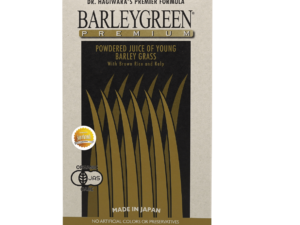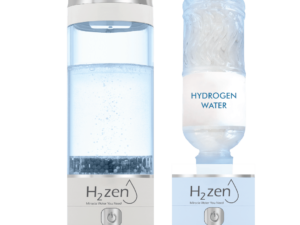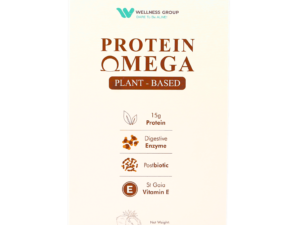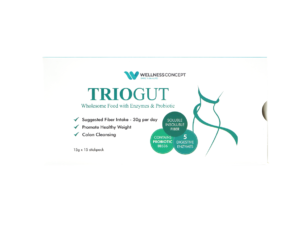Hydrogen Water and Longevity Biohacking: Wellness Group’s Expert Insights
One surprising fact: early human trials using dissolved H2 began in 2008, yet interest has grown fast across sport, liver care, and aging research.
Wellness Group frames this article as a practical guide for Malaysians who want energy, resilience, and smart aging strategies. The piece translates molecular hydrogen science into simple steps that fit busy routines.
Readers will find a clear definition of hydrogen water and why tiny gas molecules matter. The content shows how rapid diffusion may help modulate oxidative stress without blocking normal cell signals.
The article summarizes what current studies suggest: useful signals for exercise recovery, cardiometabolic markers, mental wellness, liver effects, and aging support, yet it stresses the need for larger trials.
Practical notes: delivery options range from tablets to generators. Wellness Group offers tailored plans and consultations in Malaysia via WhatsApp at +60123822655. Business hours: Mon–Fri 9:30 am–6:30 pm; Sat–Sun 10 am–5 pm.
Key Takeaways
- Hydrogen water offers promising, but not definitive, benefits for several health areas.
- Small H2 molecules diffuse fast and may target oxidative stress selectively.
- Delivery choices include tablets, machines, and ionizers; portability is an advantage.
- Evidence is encouraging for exercise and metabolic effects, but larger research is needed.
- Wellness Group provides personalized H2 plans for Malaysians via WhatsApp.
What Is Hydrogen Water? Science, Definitions, and Why It Matters
This passage breaks down what ‘hydrogen-rich’ drinking fluid really is and how it behaves in the body.
Hydrogen-rich solution vs. regular drinking water
Hydrogen water is plain drinking water infused with tiny H2 molecules under pressure so more gas dissolves. This dissolved hydrogen is bioavailable and moves across membranes faster than larger compounds. Regular drinking water lacks therapeutic dissolved H2 and does not deliver the same reductive effect.
Therapeutic ranges, ORP, and stability
Therapeutic dissolved hydrogen often starts near ~0.5 ppm. Higher concentrations can be made with electrolysis, magnesium tablets, or pressure infusion. Quality products show a negative ORP (roughly -200 to -600 mV), which signals reductive potential.
Because H2 is volatile, sealed aluminum pouches or pressurized cans retain levels longer. Generators, tablets, and cartridges are common options for Malaysians who want on-the-go prep.
“Dissolved H2 targets the most reactive oxygen species while leaving normal signaling intact.”
- Selective chemistry: targets hydroxyl radicals and other toxic radicals while sparing signaling oxygen species.
- Measurement: simple reagent kits and sensors verify claims at home.
- Safety: dissolved hydrogen gas is generally recognized as safe and does not accumulate in cells.
Wellness Group can help Malaysians compare devices, test samples in-clinic, and advise on packaging. Contact via WhatsApp +60123822655 during business hours for guidance.
Hydrogen water and longevity biohacking
Practical plans translate early research into daily habits that support energy, resilience, and recovery.
For Malaysians facing heat and humidity, simple redox and hydration strategies can help maintain comfort and steady performance. Hydrogen-rich intake has been studied for exercise recovery, metabolic markers, and short-term mood gains, with mixed but encouraging results in human studies.
The basic framework is easy: morning hydration with a small dose, pre-training for select athletes, and post-exertion use during recovery windows. Pairing this with sleep optimization, protein timing, micronutrient checks, zone 2 cardio, and strength sessions creates a practical stack.
Quick comparison for daily use
| Goal | Timing | Expected effects |
|---|---|---|
| Steady energy | Morning sip | Subtle focus; support for redox balance |
| Training recovery | Pre- and post-session | Less soreness for some users; faster readiness |
| Stress & mood | High-stress weeks | Short-term mood benefits reported in some studies |
“Track effects with wearables and readiness scores to see what works for you.”
Wellness Group offers phased plans that respect cultural meals and Ramadan routines. Book a personalized protocol via tailored guidance for Malaysians on WhatsApp +60123822655 during business hours.
The Antioxidant Edge: Targeting Reactive Oxygen Species Without Disrupting Signaling
Not all oxidants are bad; the key is to neutralize the most damaging species without blocking adaptive cues.
Selective scavenging aims at hydroxyl radicals and peroxynitrite, the species that cause the worst oxidative damage to lipids, proteins, and DNA. Small, neutral molecules can directly neutralize these radicals while leaving signaling oxygen species such as nitric oxide and hydrogen peroxide intact. This preserves normal cell communication.
Selective scavenging of hydroxyl radicals and peroxynitrite
By preferentially quenching the most reactive radicals, the approach limits oxidative damage without blunting adaptive stress responses. Studies show reductions in peroxynitrite-associated markers after consistent intake.
Mitochondrial protection and redox balance
Mechanisms include activation of Nrf2 and HO-1, which raise catalase and glutathione peroxidase levels. This boosts endogenous antioxidant capacity and supports cellular housekeeping.
At the same time, suppression of NADPH oxidase lowers excess radical generation at the source. Less electron leakage from mitochondria reduces mitochondrial ROS and helps preserve energy function during stress.
“These actions help maintain genome stability, modulate senescence, and support proteostasis.”
- Neutrophil-derived MPO falls, cutting collateral tissue damage.
- Markers seen in human exercise and metabolic studies align with these mechanisms.
- Consistent intake supports redox homeostasis more than sporadic use.
| Mechanism | Cellular effect | Practical takeaway |
|---|---|---|
| Hydroxyl radical neutralization | Less lipid, protein, and DNA damage | May protect tissue after intense exercise |
| Nrf2 / HO-1 activation | Higher catalase & GPx activity | Improves ongoing antioxidant defenses |
| NADPH oxidase suppression | Reduced radical production at source | May lower chronic oxidative stress |
| Mitochondrial ROS reduction | Better electron transport, less leakage | Supports steady energy and recovery |
Wellness Group explains these mechanisms in plain language during consults. Reach out via WhatsApp +60123822655 for localized advice on consistent redox strategies in Malaysia.
Inflammation and Inflamm-aging: How Molecular Hydrogen Modulates Cytokines
Chronic, low-grade inflammation quietly speeds biological aging and raises risk for common diseases.
Inflamm-aging refers to persistent, low-level systemic inflammation that contributes to faster biological ageing and higher disease risk. It often shows as raised cytokines and subtle declines in tissue repair.
NF-κB, NLRP3, and TLR4 pathways
Molecular hydrogen has been shown to downshift key inflammatory cascades. It inhibits NF‑κB activation, reduces NLRP3 inflammasome signaling, and blunts TLR4-triggered responses.
These actions lower proinflammatory mediators such as IL‑1β, IL‑6, TNF‑α and HMGB1 while supporting anti-inflammatory cytokines like IL‑10 and IL‑4. The net result is a rebalanced immune tone.
M1 to M2 macrophage polarization and systemic effects
Hydrogen promotes a shift from M1 (proinflammatory) to M2 (repair) macrophage states. This pivot favors tissue healing and resolution rather than chronic damage.
By modulating redox status upstream, oxidative stress is reduced, which helps dampen inflammatory cascades before they amplify. Over time, this may ease joint discomfort, support vascular health, and improve metabolic flexibility.
“These are systems-level shifts; benefits appear as trends rather than instant cures.”
- Define: inflamm-aging = persistent low-grade inflammation linked to ageing.
- Pathways: NF‑κB, NLRP3, TLR4 are downregulated by molecular hydrogen.
- Cytokines: lower IL‑1β, IL‑6, TNF‑α; higher IL‑10, IL‑4, IL‑13.
- Macrophages: M1→M2 supports repair and resolution.
| Target | Typical change | Practical meaning |
|---|---|---|
| Proinflammatory cytokines | ↓ IL‑1β, IL‑6, TNF‑α | Less chronic signalling that fuels ageing |
| Anti-inflammatory mediators | ↑ IL‑10, IL‑4 | Improved resolution and tissue repair |
| Macrophage phenotype | M1 → M2 shift | Better healing, less fibrosis risk |
For Malaysians managing chronic inflammation, Wellness Group creates tailored nutrition plans and hydrogen routines. Contact via WhatsApp +60123822655 for personalized timing and dose guidance.
From Lab to Lifestyle: Evidence Timeline and What Studies Suggest
A steady stream of clinical reports now traces how lab findings moved into short human trials and real-life routines.
Systematic reviews pooled roughly 25–30 human trials. Early work from 2008 reported metabolic hints in T2D and IGT groups. Since then, small trials tested markers tied to exercise, metabolic syndrome, liver function, endothelial function, and mood.
Headline results include improved redox biomarkers (SOD +39%, urinary TBARS −43%), modest HDL gains (+8%), better HbA1c and waist measures in higher-dose groups, and a 25.4% rise in RHI after two weeks.
Effect sizes vary. Training status, baseline health, dose, and duration shape outcomes. Many trials used daily intake for weeks to months; higher concentrations tended to show clearer metabolic shifts.
“Treat this therapy as an adjunct, not a replacement for standard care.”
- Promising areas: metabolic risk factors, endothelial function, exercise recovery.
- Emerging signals: mood, skin markers, and anti-aging biomarkers need larger trials.
- Practical tip: try n-of-1 tracking of energy, performance, and simple labs.
| Timeline | Key Finding | Practical meaning |
|---|---|---|
| 2008–2015 | Early T2D/IGT pilots | Metabolic markers improved in some cohorts |
| 2016–2022 | Exercise and cardiometabolic trials | Reduced oxidative stress; better recovery for some athletes |
| Systematic reviews | 25–30 human studies | Encouraging trends but call for larger RCTs |
Wellness Group helps Malaysian clients interpret these study trends and build safe, daily protocols. Message +60123822655 on WhatsApp for tailored plans.
Hydrogen Water for Exercise, Recovery, and Performance
Coaches now trial focused pre-session dosing to reduce lactate spikes and speed repeat sprints.
Pre-workout strategies: Aim for 300–600 mL about 30–60 minutes before intense efforts. On high-load days, add a small post-session drink to support recovery and reduce oxidative stress.
Mechanisms that may help athletes
Some trials linked reduced blood lactate at high intensity with improved ventilatory efficiency. Improved lactate handling can lower perceived fatigue and speed repeat-sprint recovery.
At the molecular level, molecular hydrogen and brief exposure to low-dose hydrogen gas may lower markers of cell damage and raise antioxidant enzyme function. These shifts can ease exercise-induced stress on protein and membranes.
Why effects vary among athletes
Trained athletes often show smaller race gains than untrained peers. Botek et al. found mixed results: a small benefit in slower runners and slight decline in the fastest. Expect nuanced, tier-dependent effects.
Youth and team-sport outcomes
Two-month trials in youth soccer reported lower MDA, IL‑1, IL‑6, TNF‑α, and higher SOD and total antioxidant capacity. These changes suggest reduced inflammation and better redox balance for team players.
Practical dosing, timing, and tracking
- Pre/intra-session: 300–600 mL 30–60 minutes pre-work.
- Peaking & heat weeks: add daily intake during tournaments to match Malaysia’s climate.
- Verify dissolved levels and drink soon after opening to retain effect.
| Goal | Timing | Notes |
|---|---|---|
| Anaerobic power | 30–60 min pre | May reduce lactate and speed repeat sprints |
| Endurance events | Pre + intra on long efforts | Benefits vary by training status; test individually |
| Youth team recovery | Daily for 6–8 weeks | Improved antioxidant markers and lower inflammation |
“Use this as a complement to sleep, nutrition, and periodized training.”
Athletes and coaches in Malaysia can co-design phased protocols with Wellness Group via WhatsApp +60123822655 to match climate and training cycles.
Cardiometabolic Health: Lipids, Glucose, and Endothelial Function
Small clinical trials suggest measurable shifts in blood lipids and vascular markers after consistent daily intake.
Lipid effects: Cohorts reported lower total cholesterol (6.42 → 5.47 mM) and LDL-C (3.96 → 3.24 mM). Some data showed improved HDL function and reduced apoB, which may lower cardiometabolic risk.
One 8-week trial (1.5–2 L/day) raised SOD by 39% and cut urinary TBARS by 43%, with HDL up ~8% and no fasting glucose change. In a metabolic syndrome RCT, higher-concentration protocols improved HbA1c, BMI, and waist-to-hip ratio.
Endothelial responsiveness
RHI rose 25.4% after two weeks in a trial, suggesting faster vascular reactivity. This change links to lower oxidative markers and better vascular tone.
“Use baseline and 8–12 week checks for lipids, glucose, and waist measures while patients track symptoms.”
- Triglycerides fell more in smokers in one cohort (2.93 → 2.3 mM).
- Pair intake with fiber, resistance training, and consistent sleep for additive benefits.
- Monitor with a physician when on lipid or glucose medications.
| Measure | Reported change | Practical note |
|---|---|---|
| Total cholesterol | ↓ 6.42 → 5.47 mM | Recheck at 8–12 weeks |
| LDL-C / apoB | ↓ notable | May benefit vascular risk profile |
| HDL | ↑ ~8% | Function may improve, not just level |
| RHI (endothelial) | ↑ 25.4% | Near-term marker of vascular health |
For Malaysians navigating festive eating and local diets, Wellness Group offers coaching to translate numbers into daily plans. Book a consult via their guidance page or WhatsApp +60123822655 for tailored monitoring.
Aging Mechanisms: DNA Stability, Telomeres, and Cellular Senescence
Genomic stability sits at the heart of healthy aging. Oxidative stress speeds up DNA damage, which can lead to faulty proteins and slower repair. Small, selective reductive molecules may protect key sites without blocking useful cell signals.
Oxidative DNA damage markers and protection
Models of radiation, UV, and cigarette smoke showed lower levels of 8‑OHdG after targeted intake. This marker tracks oxidative damage to DNA and falls when harmful reactive oxygen species are reduced.
Telomere length trends in pilot data
Telomeres shorten with cell division and stress. A randomized pilot found a mean ~4% telomere length gain after six months of consistent HRW use in healthy older adults. These early data hint at preserved replicative capacity.
“Pilot findings are promising but require larger, longer trials to confirm durability.”
- Why it matters: less DNA damage supports proteostasis and lowers disease risk over time.
- Senescence: redox modulation can reduce maladaptive senescent signaling while keeping beneficial arrest that prevents cancer.
- Mitochondria: improved mitochondrial resilience links to better DNA maintenance and lower lipid peroxidation.
Practical note: pair steady, measured intake with good sleep, resistance training, omega‑3 rich foods, and stress management. Focus on routine checks and functional markers rather than rare telomere assays.
Wellness Group educates clients on aging biomarkers and safe, supportive routines. For personalized, age‑appropriate plans, message WhatsApp +60123822655.
Mental Wellness and Cognitive Resilience
Short clinical trials now show modest mood and anxiety gains after daily intake of HRW over a few weeks.
Mood and anxiety outcomes in short-term consumption
One four-week study reported improved mood and lower anxiety scores with daily HRW. In a separate trial, women with panic disorder who added 1500 mL/day to therapy showed reduced IL‑6, IL‑1β, IL‑12, and TNF‑α.
Neuroinflammation insights and brain health potential
Neuroinflammation drives low mood, fatigue, and cognitive drag. Targeting those pathways may ease symptoms by lowering proinflammatory cytokines.
Mechanistic rationale: selective quenching of harmful radicals and Nrf2 activation can boost neural resilience without blocking needed signals.
Expect subtle benefits that accumulate with routine. Pair early-day intake with daylight exposure, regular exercise, and sleep-friendly timing to support focus without sleep disruption.
“Use HRW as an adjunct—not a replacement—for clinical care.”
For tailored plans for students, shift workers, and executives in Malaysia, Wellness Group offers customized protocols via personalized guidance on WhatsApp +60123822655.
Liver Support and Detox Pathways
Liver health relies on a balance between detox systems and repair pathways; small redox shifts can ease chronic stress on the organ.
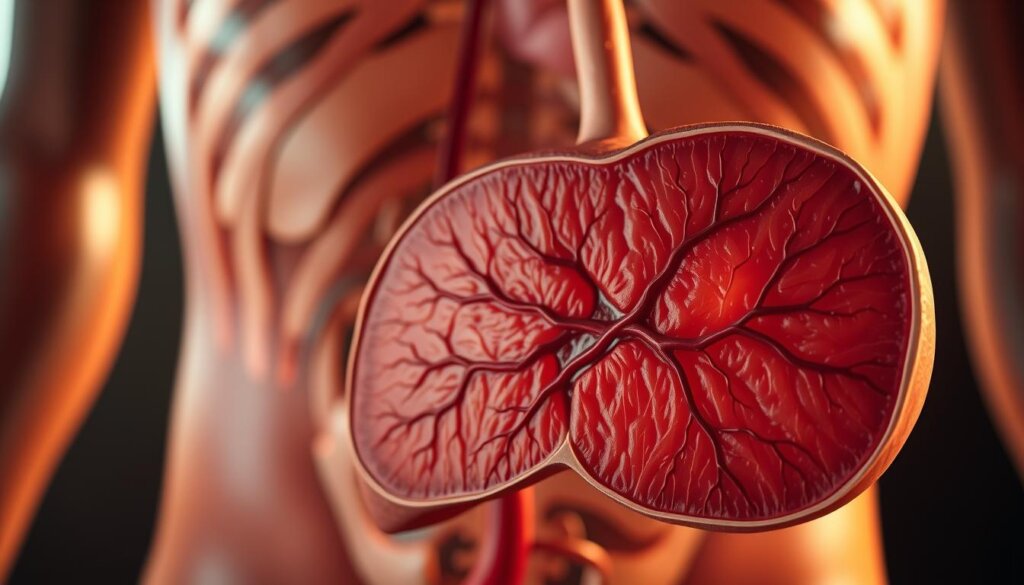
Redox imbalance and chronic inflammation drive much liver injury. Reactive species damage proteins and cell membranes, which fuels inflammation and impairs function. Targeted reductive intake may lower oxidative markers and support repair without blocking immune control.
Hepatitis B: markers, oxidative stress, and viral trends
In chronic hepatitis B trials, daily intake of 1200–1800 mL showed improved liver enzymes and reduced oxidative stress markers. Some cohorts also recorded downward trends in HBV DNA during the intervention period.
Practical takeaway: these results suggest a supportive role but not a replacement for antiviral therapy. Clinical oversight is essential when adding any adjunct to existing treatment.
NAFLD considerations in Malaysia
Nonalcoholic fatty liver disease affects a large share of adults in Malaysia due to diet, central adiposity, and sedentary habits. Lifestyle change remains the cornerstone of care.
Early randomized, double-blind studies report modest improvements in steatosis markers when adjunctive measures are combined with nutrition and exercise. This points to safe, complementary use alongside standard plans.
“Adjunctive intake may ease liver stress when paired with targeted diet, exercise, and medical care.”
- Track: liver enzymes, ultrasound, and symptom diary at 8–12 weeks.
- Timing: consume around meals to aid tolerability; moderate daily volume rather than large, infrequent doses.
- Supportive habits: focus on high‑quality protein, micronutrient adequacy, sleep, and alcohol moderation.
| Condition | Reported effect | Clinical note |
|---|---|---|
| Chronic hepatitis B | Improved enzymes; lower oxidative markers; HBV DNA trends ↓ | Continue antivirals; use adjuncts under physician care |
| NAFLD | Reduced steatosis markers when paired with lifestyle | Emphasize diet, activity, weight loss, and metabolic control |
Wellness Group coordinates with Malaysian physicians to align intake with liver care plans. Message WhatsApp +60123822655 for integrated protocols and monitoring support.
Renal Health and Dialysis: Fatigue and Oxidative Stress Management
Dialysis patients often face persistent fatigue driven by repeated oxidative hits during and after treatment.
Chronic hemodialysis exposes blood to membranes and fluids that raise oxidative stress. This burden links to intradialytic tiredness and low energy between sessions.
Electrolyzed reduced fluids during HD: what’s promising
Small trials reported better BUN and renal function markers when electrolyzed hydrogen-rich water was used during dialysis. Studies also showed lower oxidative stress and less fatigue during and between HD days.
“H2 appears to be the active therapeutic factor in reduced solutions.”
- Track fatigue with simple scales, sleep quality, and pre/post dialysis blood pressure.
- Use small-volume intake strategies to avoid fluid overload and respect interdialytic limits.
- Coordinate any change with nephrology teams before altering dialysis fluids or intake.
- Complementary habits: gentle movement, protein timing, and inflammation-aware nutrition.
| Measure | Reported change | Practical note |
|---|---|---|
| BUN / renal markers | Improved in trials | Monitor at clinic visits |
| Oxidative stress | Decreased | Correlates with less fatigue |
| Fatigue scores | Lower during and between HD | Expect gradual gains over weeks |
Wellness Group works with patients and clinics to explore safe strategies and liaises with care teams in Malaysia. Message WhatsApp +60123822655 for tailored support.
Oncology Adjuncts: What Early Research Indicates
Patients and caregivers want clear, practical summaries of early adjunct options during cancer care.
Researchers observed that pairing a reductive adjunct with 5‑fluorouracil reduced tumour volume and fibrotic tissue in colorectal models. This work also showed lower collagen content and less scarring around lesions.
Colorectal models, fibrosis, and combination with 5‑FU
Preclinical data indicate improved antitumor effects when standard chemo is combined with a reductive intake. Reduced fibrosis may aid drug penetration and lower treatment-related tissue stiffness.
Quality of life and symptom trajectories
A systematic review (677 articles screened; 27 included) noted potential benefits as an adjunct for tumour control, prognosis, quality of life, and symptom relief. Authors urged controlled human trials before clinical adoption.
“Adjunctive use may ease side effects and support recovery, but it is not a substitute for oncologic therapy.”
| Topic | Reported result | Practical note |
|---|---|---|
| Preclinical colorectal | ↓ tumour size, ↓ fibrosis | Translates to potential improved drug access |
| Systematic review | QoL & symptom relief signals | Human RCTs needed |
| Supportive care | Better tolerability trends | Coordinate with oncology team |
Patients should consult their oncologist before adding any adjunct to standard treatment. Focus on supportive care: nutrition, sleep, gentle activity, electrolyte balance, and symptom journaling to track nausea, energy, and fatigue.
Wellness Group offers coaching to integrate safe adjuncts into comprehensive plans for Malaysians. Message WhatsApp +60123822655 for tailored guidance.
Skin, Hydration, and Everyday Vitality
Malaysia’s hot, sunlit days make skin care a daily priority for anyone seeking steady radiance.
Environmental stressors such as UV, pollution, and blue-light exposure raise radicals that drive oxidative damage to skin. This speeds breakdown of collagen and elastin, weakens barrier function, and leads to dryness, roughness, and spots.
Barrier function, collagen integrity, and environmental stressors
Selective antioxidant action can neutralize the most harmful radicals while leaving normal cell signals intact. Early research and many user reports note improved hydration, elasticity, and calmness in sensitive skin after regular use of a hydrogen-rich drink plus topical care.
“Treat topical and oral routes as complementary; routine matters more than single doses.”
- Pair daily oral hydrogen water with broad-spectrum sunscreen and daytime shade to limit UV-driven damage.
- Use gentle, barrier-friendly cleansers, topical antioxidants, and moisturizer to support protein and barrier function.
- Check packaging and freshness: volatile dissolved gas is lost fast if not sealed, so choose pouches or cans when possible.
- Patch test new topicals; consult a clinician for chronic skin disease rather than self-treating serious conditions.
Wellness Group advises Malaysians on combined oral and topical plans tailored to humid, high-UV climates. Message WhatsApp +60123822655 to build a skin-focused plan that fits local routines.
How to Choose, Make, and Store Hydrogen Water
Choosing the right generation method affects concentration, convenience, and how long the dissolved gas stays in a bottle.
Electrolysis, tablets, or pressure infusion
Electrolysis ionizers suit daily users who want repeatable output and easy refills. They are convenient for home use.
Magnesium tablets are portable and produce higher on-demand levels, though they can leave a metallic taste for some users.
Pressure-infused ready-to-drink pouches or cans deliver reliable starting levels with minimal setup.
Packaging that preserves gas
Aluminum pouches and pressurized cans limit escape of dissolved hydrogen. Open and drink soon after unsealing to capture the effect.
Measuring quality at home
Use reagent kits or small DH meters to check concentration. Aim for ~0.5 ppm or higher as a practical starting target. Negative ORP readings support claims but verify with a test.
Safety, doses, and common myths
H2 is generally recognized as safe and non‑toxic. Typical study ranges are about 0.5–2.0 L/day depending on goals.
“More is not always better; verify levels and pair intake with balanced minerals in hot climates.”
- Myths: it does not cure diseases nor replace medical therapy.
- Troubleshooting: metallic taste, heat exposure, and poor seals reduce quality.
- Wellness Group offers device demos and setup help—message WhatsApp +60123822655 for tailored advice.
Work With Wellness Group in Malaysia
Wellness Group offers tailored programs that turn clinical findings into practical daily routines for Malaysians.
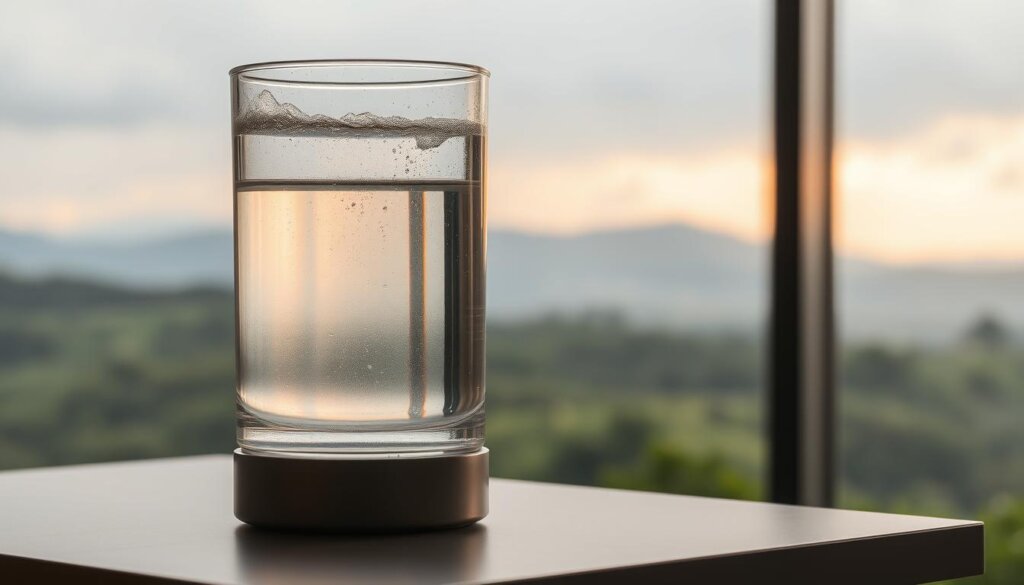
Personalized longevity biohacking plans and H₂ protocols
Initial consult: intake assessment, goal mapping, and baseline checks that guide an individualized plan.
The team selects protocols that match goals, training load, meds, and local climate. Plans pair intake with nutrition, sleep, training, and stress tools for durable results.
- Device help: selection, concentration checks, and storage best practices for Malaysia’s heat.
- Tracks: athlete, metabolic, and healthy aging plans with clear milestones and reviews.
- Medical coordination: they liaise with clinicians for clients with chronic conditions to ensure safety and synergy.
- Corporate and team programs: education on hydrogen, hydration, and practical on-site support.
Contact and hours
WhatsApp-first support: quick scheduling, check-ins, and follow-up via +60123822655.
Business hours: Mon–Fri 9:30 am–6:30 pm; Sat–Sun 10 am–5 pm. Office and remote options fit busy Malaysian schedules.
“Evidence-informed, client-centered care designed for practical daily life.”
Conclusion
This conclusion wraps practical advice for Malaysians who want a measured, evidence-aware approach.
Core point: hydrogen water offers a selective, convenient way to support redox balance and healthy adaptation while lifestyle habits remain central.
Current studies show the strongest signals for improved redox biomarkers, some cardiometabolic markers, and reduced exercise fatigue. Emerging data hint at mental and aging benefits but require larger trials.
Expect this as an adjunct, not a cure. Verify product quality with dissolved tests and choose packaging that preserves H2. Start simple: a morning sip plus targeted pre/post-exertion use, then track changes.
Those with medical conditions should coordinate with clinicians. For personalized plans and friendly support, message Wellness Group on WhatsApp at +60123822655 during business hours. Thank you for reading this article and choosing an evidence-conscious path. Read a practical hydrogen water cleansing guide for more tips.
FAQ
What is dissolved H₂ and why does it matter for wellness?
Dissolved H₂ refers to molecular hydrogen gas present in drinking fluid. It acts as a selective antioxidant that targets the most damaging reactive oxygen species, such as hydroxyl radicals, without broadly blocking signaling molecules. Many researchers believe this selectivity helps protect cells and mitochondria while leaving normal redox signaling intact.
How does this intervention differ from standard antioxidant supplements?
Unlike broad-spectrum antioxidants, dissolved H₂ works at the molecular level and can diffuse into tissues and organelles quickly. It appears to neutralize highly reactive species without suppressing beneficial oxidative signaling pathways that cells use for adaptation and repair.
What therapeutic ranges should users look for (ppm, ORP, stability)?
Products typically report parts per million (ppm) of dissolved gas; common effective ranges fall between 0.5–1.6 ppm for daily use. Oxidation-reduction potential (ORP) readings can be misleading since they reflect total redox status, not selective scavenging. Stability depends on packaging and storage—sealed cans, aluminum pouches, or good generators retain gas better than open bottles.
Are there proven benefits for exercise performance and recovery?
Trials show mixed but promising results. Some studies report reduced markers of muscle oxidative stress, faster recovery from sprint fatigue, and lower perceived exertion. Effects vary by athlete level, dose timing, and type of exercise. Using it 30–60 minutes pre-workout or during recovery is a common practical approach.
Can it improve cardiometabolic markers like lipids and glucose?
Early human trials suggest modest improvements in triglycerides, HDL function, and some glucose metabolism markers such as HbA1c in specific populations. Results depend on baseline metabolic health, dose, and duration. It should be considered adjunctive to diet, exercise, and medical care.
What does the evidence say about inflammation and immune signaling?
Research indicates modulation of inflammatory pathways including NF-κB, NLRP3, and TLR4, with downstream reductions in proinflammatory cytokines. Studies also document shifts in macrophage polarization from an M1 to an M2 phenotype in some models, suggesting potential systemic benefits for chronic low-grade inflammation.
Is there data on aging, DNA damage, and cellular senescence?
Preclinical and limited clinical work show reductions in oxidative DNA damage markers and improved mitochondrial markers. Pilot data hint at slowed senescence-related signaling, but robust telomere length evidence in large human cohorts remains scarce. More longitudinal studies are needed.
What about cognitive effects and mood?
Short-term trials report improvements in markers of neuroinflammation and modest benefits for mood and anxiety in some participants. Findings are preliminary but suggest potential for supporting cognitive resilience when combined with lifestyle measures.
Are there specific benefits for liver and renal conditions?
Small studies in liver disease models and patients with nonalcoholic fatty liver disease show reductions in oxidative stress and improvements in liver enzymes. In dialysis settings, electrolyzed solutions with dissolved gas have reduced fatigue and oxidative markers during hemodialysis in pilot reports.
Can it be used alongside cancer treatments?
Early adjunct research indicates symptom relief and possible reduction in treatment-related oxidative damage without interfering with chemotherapy in some models. Oncologists should always be consulted before adding any adjunctive modality to standard cancer care.
How should consumers choose delivery methods: electrolysis, tablets, or pressurized infusions?
Electrolyzer generators produce on-demand gas and avoid additives. Magnesium tablet systems release gas via reaction but may alter mineral balance. Canned or pressurized pouches preserve concentration longer. Choice depends on convenience, budget, and quality control; look for independent testing of dissolved gas levels.
How is dosing and timing typically recommended for training cycles or daily use?
Practical dosing ranges from 0.5 to 1.6 ppm per serving, with total daily intake varying by goal. Athletes often consume a dose 30–60 minutes before training and another during recovery. For general wellness, a morning dose plus one later in the day is common. Start conservatively and monitor responses.
Are there safety concerns or common myths to be aware of?
It has a strong safety profile in trials to date with few reported adverse effects. Myths include claims of curing all diseases or replacing medical therapy. Users should avoid high-pressure DIY inhalation without medical supervision and consult clinicians when on medications or with serious conditions.
How should one measure quality at home?
Portable dissolved gas meters that read ppm are useful for spot checks. Because readings fall with time and exposure, measure immediately after opening or production. Independent third-party lab reports on dissolved levels and absence of contaminants add confidence.
Are there region-specific considerations for Malaysia—climate, storage, and adoption?
Tropical heat accelerates gas loss, so consumers should choose sealed packaging or on-demand generators. Cultural acceptance is growing among wellness communities; integrating protocols with local diets and hydration practices helps practical adoption. Clinics like Wellness Group offer personalized plans aligned with Malaysian lifestyles.
How can someone work with Wellness Group for personalized plans?
Wellness Group provides tailored longevity protocols and dosing strategies for individuals in Malaysia. They can be reached by WhatsApp at +60123822655. Office hours are Mon-Fri 9:30 am–6:30 pm and Sat-Sun 10 am–5 pm.

Khloe Tan
Khloe Tan is a Certified Nutritionist, Corporate Wellness Trainer, and Holistic Health Specialist with over 15 years of experience in the health and wellness industry. She has delivered more than 100 talks nationwide, inspiring and educating diverse audiences on nutrition, lifestyle, and sustainable wellness. Her work has positively impacted over 3,000 lives, and she continues to champion holistic approaches to well-being in both corporate and personal settings.
